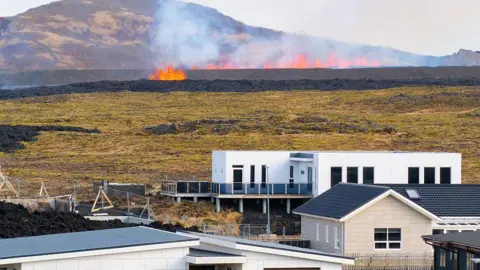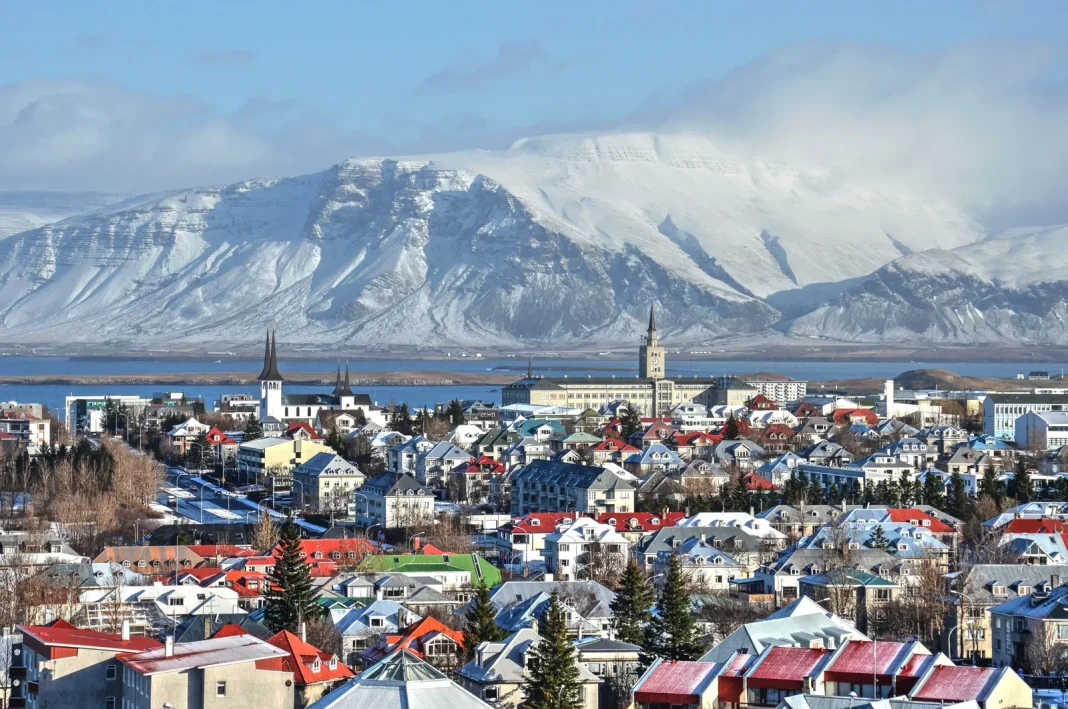A volcanic eruption in south-west Iceland has prompted the evacuation of both residents and tourists near the town of Grindavik, a fishing community close to the famous Blue Lagoon spa. The volcano has been erupting since the morning, spewing lava and smoke in a dramatic display of orange and red. A large crack, measuring 1.2 kilometers (0.75 miles) in length, has opened up in the ground, and multiple earthquakes have been recorded in the area throughout the day.
Local authorities have urged people to “leave the danger zone,” with Grindavik’s police commissioner, Ulfar Ludviksson, stating that most residents had complied. However, a small group of individuals chose to stay in their homes, despite the increasing risk of lava flows reaching the town. Experts, including Rikke Pedersen from the Nordic Volcanological Centre, expressed concern that the town might be directly threatened by lava, especially as protective barriers around the town were breached by new fissures.
The Icelandic Meteorological Office (IMO) has confirmed that significant cracking has occurred within Grindavik, including a break in a hot water pipe. Although the volcanic activity eased somewhat in the early afternoon, the eruption continues to pose significant risks to the surrounding area.
While roads in and out of Grindavik remain closed, flights have not been affected at this time. This eruption follows a mass evacuation of the town’s 4,000 residents in 2023 due to ongoing volcanic threats. The latest eruption’s magma flow has stretched to about 11 kilometers (6.8 miles), the longest measured since November 2023, with the magma corridor extending further northeast than previous eruptions.
The eruption began around 09:45 local time (10:45 BST) and follows a series of earthquakes in the Sundhnúk crater range. Iceland, sitting on the Mid-Atlantic Ridge, is home to 33 active volcano systems, with volcanic activity on the Reykjanes Peninsula having occurred repeatedly since 2021. The last major volcanic period in the region lasted for decades, about 800 years ago.
As of now, gas pollution from the eruption is expected to move northeast, towards the capital area, depending on wind direction. The situation continues to develop, and authorities are closely monitoring the situation for further risks.

